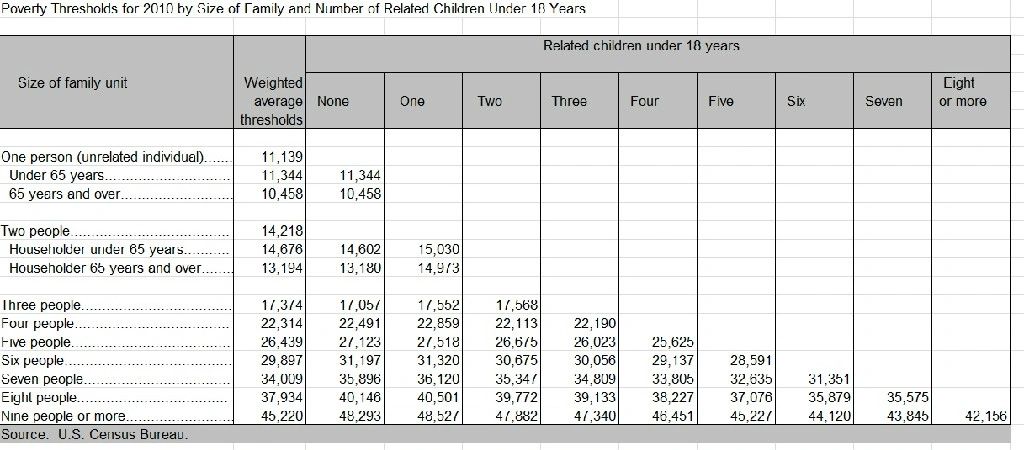
Poverty Levels Up
Not News to Us: the poverty rate goes up 091411
The Census Bureau has released its figures on poverty for 2010. Believe it or not, more of us are poor this year than last.
The Poverty Threshold is the amount at which a family of a given size is assumed to be able to live in a home, and pay for food and other necessities. It isn’t much to live on. Further, the threshold doesn’t consider those who would be below the “line” if they weren’t receiving some kinds of aid.
Poverty is not easy to measure. Poverty thresholds were first used to determine eligibility for USDA and Social Services programs and used estimates founded on the percent of a family’s income they spent on food. Currently, the Census Bureau tries to use several measures; the easiest is the income model. In this model, you aren’t poor if your unemployment and other entitlements bring you above the critical amount; typically about $22,000 for a couple with two kids. The Census Bureau publishes figures and does some research on poverty, including a recent study that says that even though rates of poverty stay somewhat the same, about a third of people move in and out of poverty, generally to just above poverty. This means we have a large number of people, between a fifth and a quarter, who hover around the poverty threshold . Learn more about poverty measures HERE

How poor are you?
But even the Census Bureau recognizes that their methodology doesn’t capture the whole picture. A CB spokesperson said that if they counted 20 and 30 year olds living with parents as “boomerang offspring” many more would have fallen below the poverty threshold. The ability to replace an appliance, car, or medical device is not directly measured. Deferred maintenance or replacement of everyday items builds towards an eventual major expense, which wouldn’t change income, but which would reduce the family’s ability to spend money on things like food.
There were far more Americans living in poverty in the 1950s, but the number decreased to 11% in the sixties and remained fairly constant until the late 1980s and 1990s.
As it is, one in six of us, and nearly one in four children, are living in poverty. Four hundred thousand more families lived beneath the poverty threshold than last year.
The Census Bureau doesn’t forecast the future, but at a time when the industry reports more, not less foreclosures now that the “recession” is officially over, and with unemployment numbers continuing to soar, it is possible there is a generation of young people who won’t own their own homes until late in life, if ever.
